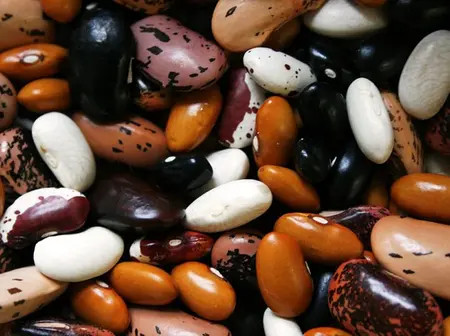The cost of a 90-kilogram bag of beans in Kenya continues to vary widely across different markets, with prices ranging anywhere between Ksh 6,000 and over Ksh 16,000 depending on the bean variety and prevailing supply and demand dynamics.
This price fluctuation has become a key concern for traders, farmers, and consumers, particularly as beans remain one of the most essential staples in Kenyan households.
According to recent market reports, the price of beans is influenced by several factors, including the type of bean, the region of production, transport costs, and seasonal harvest trends.
Wairimu beans, which are among the most commonly consumed and widely grown in the country, are currently trading at about Ksh 9,000 per 90-kilogram bag. This price, however, can shift upwards or downwards depending on the time of year and the availability of stocks in the local markets.
Other bean varieties, such as Nyayo, Rosecoco, Canadian, Yellow beans, and Red Kidney, tend to attract different price tags, sometimes fetching significantly higher amounts. Premium varieties that are in high demand but limited in supply may push prices above the Ksh 16,000 mark per 90kg bag, especially in urban centers where demand is strong but supply chains are stretched.
Traders in Nairobi and other major towns have noted that while prices in rural markets, especially in producing counties such as Rift Valley, Western, and parts of Eastern Kenya, may be lower, transport and handling costs often drive up the final price in city markets.
For instance, a bag bought at Ksh 7,500 in Eldoret might retail at over Ksh 10,000 in Nairobi after factoring in transportation, market levies, and storage charges.
Farmers, on the other hand, say the fluctuating prices are both an opportunity and a challenge. When harvests are good and supply is high, prices tend to fall to as low as Ksh 6,000, cutting into farmers’ profits.
Conversely, during dry seasons or periods of reduced harvests, the scarcity of beans causes prices to soar, favoring farmers who have surplus stocks but hurting consumers.
The government, through the Ministry of Agriculture, has in the past explored strategies to stabilize food prices, including encouraging farmers to embrace modern storage facilities that can help reduce post-harvest losses.
Experts argue that if farmers are able to store beans for longer periods without spoilage, they can release their stocks gradually to the market, thus reducing price shocks.
For ordinary Kenyan households, the price of beans directly affects the cost of living, as beans are a common source of protein for millions. Many families, particularly in urban areas, are increasingly finding it difficult to afford beans as prices climb, often opting for cheaper substitutes such as green grams, cowpeas, or lentils when beans become too expensive.
Market analysts now predict that the cost of beans in the coming months will depend heavily on weather patterns and regional trade flows. With neighboring countries such as Uganda and Tanzania also being major suppliers of beans to the Kenyan market, cross-border trade dynamics and export policies are expected to play a significant role in stabilizing or pushing up local prices.

Leave a Reply